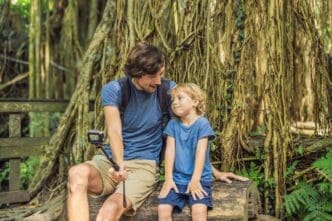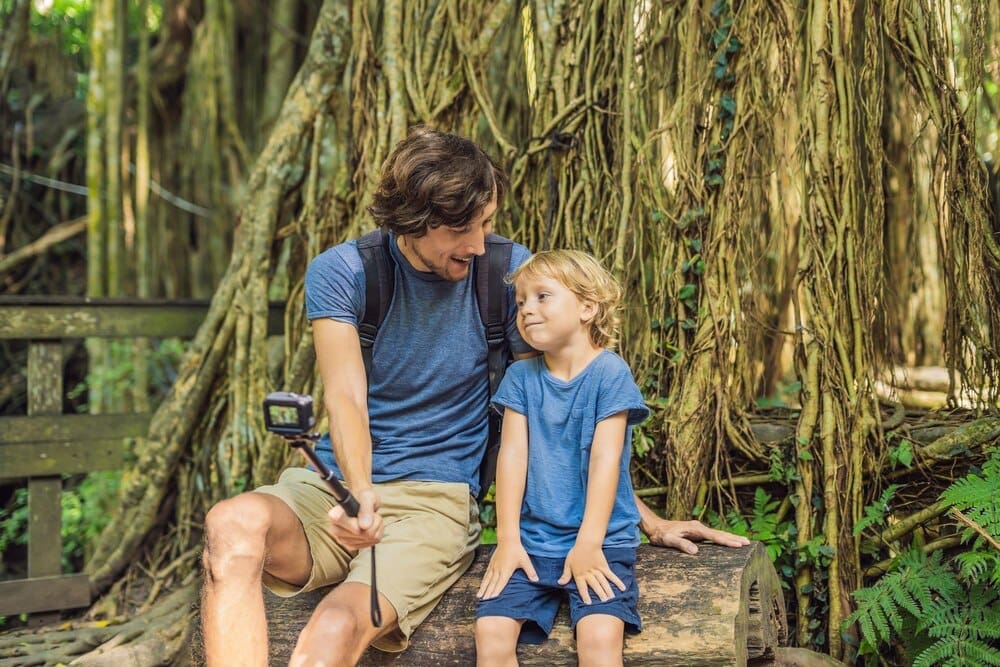For families seeking a refreshing escape from the urban energy of Miami, the region’s diverse nature preserves offer an unparalleled opportunity for adventure, education, and connection. From the world-renowned wetlands of Everglades National Park to the serene mangrove trails of Oleta River State Park, these protected areas provide year-round destinations where children and parents can actively explore South Florida’s unique ecosystems. A family day at a nature preserve is more than just a walk in the park; it’s a chance to witness alligators basking in the sun, paddle through tranquil waterways, and learn about the delicate balance of the subtropical environment, all within a short drive of the city.
Why Choose a Nature Preserve for a Family Day?
In a city celebrated for its beaches and nightlife, the natural landscapes offer a different, equally compelling kind of magic. Choosing a preserve for a family outing provides a vital counterpoint to screen time and structured activities.
These excursions are inherently educational, turning a simple walk into a live biology lesson. Children can see firsthand the flora and fauna they might only read about in books, fostering a deeper appreciation for conservation and the environment.
Furthermore, these trips are active. They encourage hiking, biking, kayaking, and swimming, promoting physical health in a fun and engaging way. Most parks offer activities suitable for all ages and fitness levels, ensuring everyone in the family can participate.
Finally, a day in nature is a powerful way to de-stress and reconnect as a family. Away from the distractions of daily life, the shared experience of spotting a rare bird or navigating a trail creates lasting memories and strengthens family bonds.
Top Picks for Family-Friendly Nature Preserves
Miami-Dade County is home to a remarkable collection of state, national, and local parks, each offering a distinct experience. Here are the top destinations perfect for a family adventure.
Everglades National Park: The Crown Jewel
No discussion of South Florida nature is complete without the Everglades. This UNESCO World Heritage site is a vast and vital ecosystem, and its accessible southern entrances are perfect for families.
The most family-friendly access point is the Shark Valley entrance, located off the Tamiami Trail. Its centerpiece is a 15-mile paved loop trail, which you can explore via a two-hour guided tram tour or by renting bicycles. The tram tour is fantastic for families with younger children, as expert guides point out alligators, turtles, and a stunning array of wading birds.
Another excellent spot is the Anhinga Trail, near the main entrance in Homestead. This short, paved, and boardwalk trail is famous for its reliable and close-up wildlife sightings. It’s almost a guarantee you’ll see alligators, anhingas drying their wings, and turtles swimming in the clear water, making it a thrilling experience for kids.
Oleta River State Park: Urban Oasis Adventure
Nestled in North Miami Beach, Oleta River State Park is Florida’s largest urban park and a stunning example of a coastal mangrove forest. Its accessibility makes it an easy choice for a spontaneous day trip.
The park is a haven for water sports. Families can rent kayaks, canoes, or stand-up paddleboards to explore the calm, winding mangrove trails. Paddling through these shaded water tunnels is a magical experience, offering a cool respite from the Florida sun.
For those who prefer to stay on land, Oleta offers more than 15 miles of off-road bicycling trails, ranging from novice to expert. There are also paved paths perfect for a leisurely stroll or bike ride with little ones. The park also features a small, man-made beach on the Intracoastal Waterway, providing a safe, waveless area for children to swim and play in the sand.
Bill Baggs Cape Florida State Park: History and Scenery
Located on the southern tip of Key Biscayne, Bill Baggs Park combines natural beauty with a rich history. It is consistently ranked as having one of the most beautiful beaches in America, with calm waters and soft sand.
The park’s main attraction is the historic Cape Florida Lighthouse, originally built in 1825. Families can take a guided tour and climb the 109 steps to the top for breathtaking panoramic views of the Atlantic Ocean, Biscayne Bay, and the Miami skyline. It’s a rewarding climb that offers a fantastic photo opportunity.
Beyond the lighthouse and beach, the park has paved bike paths, walking trails that wind through coastal vegetation, and designated fishing areas along the seawall. Two restaurants, the Lighthouse Café and Boater’s Grill, offer waterfront dining options if you don’t want to pack a picnic.
Matheson Hammock Park: A Unique Lagoon Experience
Designed in the 1930s, Matheson Hammock Park in Coral Gables is a local favorite, especially for families with very young children. Its most unique feature is a man-made atoll pool, a circular, protected swimming area flushed naturally by the tides of Biscayne Bay.
This calm, shallow lagoon is perfect for toddlers and young swimmers who might be intimidated by ocean waves. The surrounding palm-fringed beach provides ample space for building sandcastles and relaxing.
The park also contains a preserved tropical hardwood hammock, with scenic trails that offer a glimpse into what the South Florida landscape looked like before development. The park’s picturesque setting, with views of the downtown skyline across the bay, makes it a popular spot for photography.
Deering Estate: Culture Meets Conservation
Situated in Palmetto Bay, the Deering Estate is a 444-acre environmental, archaeological, and historical preserve. It offers a unique combination of experiences, blending the Gilded Age homes of Charles Deering with pristine natural habitats.
Families can take guided or self-guided tours of the estate’s seven distinct ecosystems, including globally endangered pine rockland and salt marshes. The guided nature tours are particularly valuable, as experts explain the significance of the flora and fauna.
The estate also offers incredible canoe tours to Chicken Key, a small mangrove island and bird rookery just offshore. For a dose of ancient history, you can see the Cutler Fossil Site, where evidence of Paleo-Indian life dating back 10,000 years has been discovered.
Planning Your Perfect Nature Outing
A little preparation goes a long way in ensuring your family has a comfortable and enjoyable experience. Paying attention to what you pack and when you go can make all the difference.
What to Pack
Creating a “go-bag” for nature adventures is a smart strategy. Your checklist should always include:
- Sun Protection: Sunscreen, wide-brimmed hats, and sunglasses are non-negotiable in the Miami sun.
- Insect Repellent: Mosquitos can be present year-round, especially near water and in the shade.
- Water and Snacks: Pack plenty of water in reusable bottles to stay hydrated. High-energy snacks are great for keeping kids motivated on the trail.
- Comfortable Footwear: Closed-toe walking shoes or sneakers are best for trails.
- Binoculars and a Camera: Encourage kids to get a closer look at wildlife with binoculars. A camera allows them to document their discoveries.
- First-Aid Kit: A small kit with bandages, antiseptic wipes, and sting relief is always a good idea.
Best Time of Year to Visit
While Miami’s parks are open year-round, the experience varies significantly between the two main seasons. The dry season, roughly from November through April, is generally considered the best time for a visit.
During these months, temperatures are milder, humidity is lower, and there is very little rainfall. Critically, mosquito populations are at their lowest, and wildlife viewing in the Everglades is at its peak as animals congregate around the shrinking water sources.
The wet season, from May through October, brings heat, high humidity, and frequent afternoon thunderstorms. While the parks are lush and green, the bugs can be intense. If you visit during this time, plan your activities for the morning to avoid the afternoon heat and storms.
Keeping Kids Engaged
To make the trip even more exciting for children, turn it into a game. Create a simple nature scavenger hunt or a wildlife bingo card. Challenge them to find things like a pinecone, a feather, a specific type of bird, or a turtle.
Give them a role, like “chief navigator” with a map or “lead photographer” with a kid-friendly camera. These small responsibilities can make them feel more invested in the journey. Most importantly, use the opportunity to teach the principles of Leave No Trace, such as packing out everything you bring in and respecting wildlife from a distance.
Ultimately, escaping into Miami’s natural preserves offers families a powerful antidote to the pace of modern life. These green spaces are not just areas of conservation but are vibrant, living classrooms and playgrounds. By taking a day to explore the trails, paddle the waterways, and simply listen to the sounds of nature, families can forge deeper connections with the environment and with each other, creating memories that will last a lifetime.














